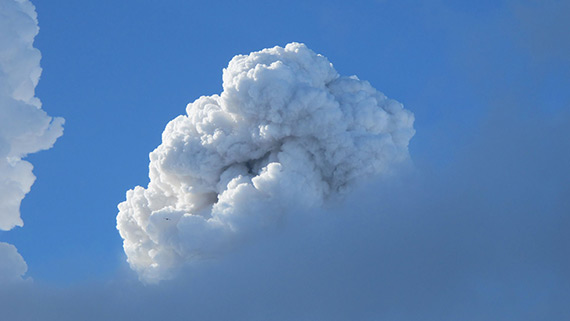Icelandic volcano sulphur pollution was triple European industry

Discharge of lava from the eruption at Bárðarbunga volcano, starting in August 2014, released up to 120,000 tonnes per day of sulphur dioxide (SO2) gas. These emissions can cause acid rain and respiratory problems.
Dr Anja Schmidt from the School of Earth and Environment at the University of Leeds, who led the study, said: "The eruption discharged in six months enough lava to cover an area the size of Manhattan. Also, in the beginning, the eruption emitted about eight times more sulphur dioxide per day than is emitted from all man-made sources in Europe per day."
A team of European scientists, including also Dr Iolanda Ialongo from FMI, participated to this work published by the Journal of Geophysical Research. SO2 data from OMI (Ozone Monitoring Instrument) and IASI (Infrared Atmospheric Sounding Interferometer) satellite sensors were used to map sulphur dioxide pollution levels from the eruption. These were correctly reproduced using dispersion model simulations. Based on these simulations, it was estimated that Holuhraun eruption released up to 120,000 tons per day into the lowermost atmosphere.
This eruption produced lava instead of ash, and so it didn't impact on air traffic as in 2010 eruption of Eyjafjallajökull – but it did affect air quality. These results help in predicting where pollution from future eruptions will spread.
"Volcanic sulphur dioxide was transported more than 2700 km far from the volcano, affecting air quality also in Finland: high SO2 concentrations were observed several times in Lapland by satellite and ground-based instruments." said Dr Iolanda Ialongo.
More information:
Dr Iolanda Ialongo, tel. +358 50 380 3085, iolanda.ialongo@fmi.fi

Annual total anthropogenic sulfur dioxide (SO2) emissions (red line, upper x-axis) for 1990 to 2011 from 28 member states of the European Union. Cumulative volcanic SO2 emissions during the 2014-2015 Holuhraun eruption are shown as blue line (lower x-axis). Sulphur dioxide released from the volcano, when averaged over the six months of the eruption, was equivalent to triple the emissions from European industry.
Paper (open access):http://onlinelibrary.wiley.com/doi/10.1002/2015JD023638/abstract
